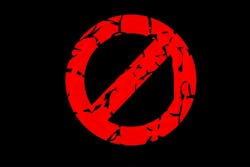In response to Russia’s invasion of Ukraine, the White House has instructed the U.S. Commerce Department, through its Bureau of Industry and Security (BIS), to impose restrictions on the export of technology, including telecommunications systems and lasers, to Russia. The restrictions are intended to shut off Russia’s defense, aerospace, and maritime sectors from critical technology developed in the U.S. or that use components made in the U.S. The European Union and five other countries are expected to impose similar sanctions.
As was the case with ZTE and Huawei previously, certain organizations within the Russian defense ecosystem have been placed on the Entity List (see “U.S. Commerce Dept. finds ZTE violated export disciplinary agreement, bans U.S. component supply” and “Huawei faces U.S. technology access ban”). Placement on the list requires that special licenses be obtained for items developed in the U.S. as well as foreign items produced using U.S. equipment, software, and blueprints before they can be sent to these Russian entities. Instructions for filing for such licenses state that the parties involved should assume such license requests will be denied.
The Commerce Department has imposed restrictions on Russian access to semiconductors, computers, telecommunications technology, information security equipment, lasers, and sensors. (For a definition of what constitutes “telecommunications,” visit the BIS website.) Concurrently, BIS added 49 Russian military end-user organizations to its Entity List.
In addition to the EU, Japan, Australia, the United Kingdom, Canada, and New Zealand have agreed to adopt similar sanctions. The Commerce Department said via a release that it expects other countries to follow suit.
“Russia’s attack on Ukraine is an attack on the democratic, rules-based order and the United States must meet this aggression with real consequences,” said Deputy Secretary of Commerce Don Graves. “This coordinated policy is a strong statement of solidarity from the United States and the international community with the people of Ukraine. This powerful response was developed in close consultation with our global allies and partners to cut the Russian military off from the technologies and products it needs to sustain its unprovoked and unacceptable aggression.”
“With these export controls, we, together with our allies and partners, are technologically isolating Russia and degrading its military capabilities,” said Assistant Secretary of Commerce for Industry and Security Thea D. Rozman Kendler. “Russia’s access to cutting-edge U.S. and partner country technology will halt. Its defense industrial base and military and intelligence services will not be able to acquire most Western-made products. Even most products made overseas using sensitive U.S. technology will be restricted for export to Russia. Russia’s violation of Ukraine’s territorial integrity and sovereignty warrants this swift and expansive export controls response.”
The export restrictions complement financial restrictions the White House imposed as well. The Biden Administration indicates that further economic sanctions could follow if warranted.
For related articles, visit the Optical Technologies Topic Center.
For more information on optical components and suppliers, visit the Lightwave Buyer’s Guide.
To stay abreast of optical communications technology, subscribe to Lightwave’s Enabling Technologies Newsletter.

Stephen Hardy | Editorial Director and Associate Publisher, Lightwave
Stephen Hardy is editorial director and associate publisher of Lightwave and Broadband Technology Report, part of the Lighting & Technology Group at Endeavor Business Media. Stephen is responsible for establishing and executing editorial strategy across the both brands’ websites, email newsletters, events, and other information products. He has covered the fiber-optics space for more than 20 years, and communications and technology for more than 35 years. During his tenure, Lightwave has received awards from Folio: and the American Society of Business Press Editors (ASBPE) for editorial excellence. Prior to joining Lightwave in 1997, Stephen worked for Telecommunications magazine and the Journal of Electronic Defense.
Stephen has moderated panels at numerous events, including the Optica Executive Forum, ECOC, and SCTE Cable-Tec Expo. He also is program director for the Lightwave Innovation Reviews and the Diamond Technology Reviews.
He has written numerous articles in all aspects of optical communications and fiber-optic networks, including fiber to the home (FTTH), PON, optical components, DWDM, fiber cables, packet optical transport, optical transceivers, lasers, fiber optic testing, and more.
You can connect with Stephen on LinkedIn as well as Twitter.
